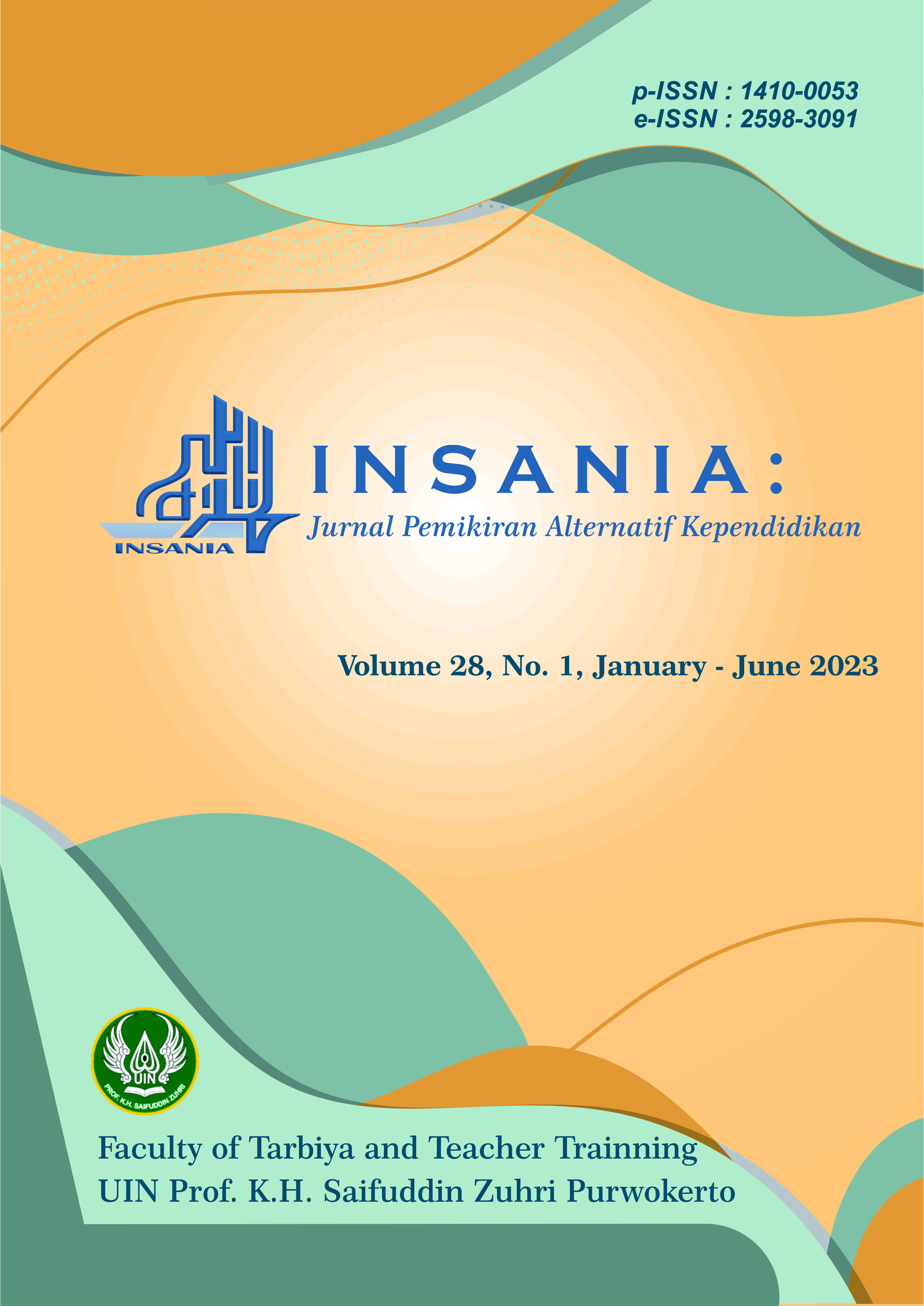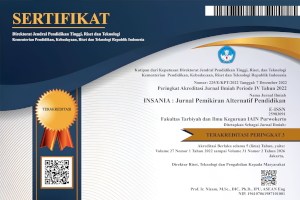The impact of TikTok videos in creative designs of house plans in civil technology’s practical assessment tasks
DOI:
https://doi.org/10.24090/insania.v28i1.7887Keywords:
TikTok, Civil Technology, Practical Assessment TaskAbstract
The internet bandwidth has drastically improved since most schools have introduced multimodal teaching and learning. This allowed many students to explore various online learning platforms in search of expanded knowledge and skills. Like many other teenage students, Civil Technology students ventured into TikTok videos to learn and share ideas about designing house plans which they used to do a compulsory practical assessment task (PAT). This study explored students' experiences on how TikTok videos have opened doors for creativity in designing house plans, granny flats in particular. A qualitative research method was used, and a case study design was used for sixteen (16) civil technology students who were purposefully sampled to become respondents to the questions posed. Focused group interviews and document analysis were used to gather data and thematic as well as content analysis were used to analyse the sets of data. This study found that the students acquired more creative ways on TikTok to design single-storey house plans. They learned that they could design domestic houses without bricks or timber walls, but also glasses or shipping containers through 3D design. This increased their spatial ability to understand how house plans could be designed using various materials. Thus, this study recommends for habitual use of TikTok videos and live sessions to learn civil technology-building concepts to advance creativity when doing practical assessment tasks.Downloads
References
Agustiningsih, N., Yaningsi, N. W., & Effendi, M. H. (2022). Encouraging students’ science critical thinking skills through a problem-based learning model. INSANIA: Jurnal Pemikiran Alternatif Kependidikan, 27(2), 120–130. https://doi.org/10.24090/insania.v27i2.6731
Baker, C., & Baker, D. (2023). An influencer's world: A behind-the-scenes look at social media influencers and creators. University of Iowa Press.
Baron, N. (2021). How we read now: Strategic choices for print, screen, and audio. Oxford University Press. https://doi.org/10.1093/oso/9780190084097.001.0001
Bowen, G. A. (2009). Document analysis as a qualitative research method. Qualitative research journal, 9(2), 27-40. https://doi.org/10.3316/QRJ0902027
Boys, J. (2022). Exploring inequalities in the social, spatial and material practices of teaching and learning in pandemic times. Postdigital Science and Education, 4(1), 13-32. https://doi.org/10.1007/s42438-021-00267-z
Braun, V., & Clarke, V. (2012). Thematic analysis. In H. Cooper, P. M. Camic, D. L. Long, A. T. Panter, D. Rindskopf, & K. J. Sher (Eds.), APA handbook of research methods in psychology, Vol. 2. Research designs: Quantitative, qualitative, neuropsychological, and biological (pp. 57–71). American Psychological Association. https://doi.org/10.1037/13620-004
Burns, M. (2021). EdTech essentials: The top 10 technology strategies for all learning environments. ASCD.
Clarke, V., Braun, V. and Hayfield, N. (2015) Thematic Analysis. In: Smith, J.A., Ed., Qualitative Psychology: A Practical Guide to Research Methods (pp. 222-248). SAGE Publications.
Dindi, A. M. (2022). Influence of Personal Ethics of Construction Project Participants on Project Performance in Kenya (Doctoral dissertation, Jomo Kenyatta University of Agriculture and Technology). JKUAT Repository. http://localhost/xmlui/handle/123456789/5937
Fan, X., & Zhong, X. (2022). Artificial intelligence-based creative thinking skill analysis model using human–computer interaction in art design teaching. Computers and Electrical Engineering, 100, 107957. https://doi.org/10.1016/j.compeleceng.2022.107957
Fiallos, A., Fiallos, C., & Figueroa, S. (2021, July). Tiktok and education: Discovering knowledge through learning videos. 2021 Eighth International Conference on eDemocracy & eGovernment (ICEDEG), 8, 172-176. https://doi.org/10.1109/ICEDEG52154.2021.9530988
Francis, K., Khan, S., & Davis, B. (2016). Enactivism, spatial reasoning and coding. Digital Experiences in Mathematics Education, 2, 1–20. https://doi.org/10.1007/s40751 015-0010-4
Guzzo, T., Caschera, M. C., Ferri, F., & Grifoni, P. (2023). Analysis of the digital educational scenario in italian high schools during the pandemic: Challenges and emerging tools. Sustainability, 15(2), 1426. https://doi.org/10.3390/su15021426
Hadi, M. A., & José Closs, S. (2016). Ensuring rigour and trustworthiness of qualitative research in clinical pharmacy. International journal of clinical pharmacy, 38, 641-646. https://doi.org/10.1007/s11096-015-0237-6
Hasan, N., Rana, R. U., Chowdhury, S., Dola, A. J., & Rony, M. K. K. (2021). Ethical considerations in research. Journal of Nursing Research, Patient Safety and Practise (JNRPSP) 2799-1210, 1(01), 1-4. https://doi.org/10.55529/jnrpsp11.1.4
Hawes, Z., Tepylo, D., & Moss, J. (2015). Developing spatial thinking: Implications for early mathematics education. In B. Davis & Spatial Reasoning Study Group (Eds.), Spatial reasoning in the early sources: Principles, assertions and speculations (pp. 29–44). Routledge. https://doi.org/10.4324/9781315762371
Jagtap, S. (2019). Design creativity: Refined method for novelty assessment. International Journal of Design Creativity and Innovation, 7(1-2), 99-115. https://doi.org/10.1080/21650349.2018.1463176
Krippendorff, K. (2018). Content analysis: An introduction to its methodology. Sage publications.
Lester, J. N., Cho, Y., & Lochmiller, C. R. (2020). Learning to do qualitative data analysis:A starting point. Human Resource Development Review, 19(1), 94-106. https://doi.org/10.1177/1534484320903890
Macmillan, J. H., & Schumacher, S. (2014). Research in Education: Evidence-Based Inquiry. Pearson Education.
Magolego, M.P, Mtshali, T.I. & Ramaligela, M. S. (2022). Nurturing creativity as the 21stcentury skill: Effective strategies for promoting creativity in the Technology classroom. NeuroQuantology, 20 (19) 2921-2931. https://doi.org/10.48047/nq.2022.20.19.NQ99249
Masilo, G., Simelane-Mnisi, S., Mji, A., & Mokgobu, I. (2021). Students’ behavioural intention and challenges to bring your own device (BYOD) in higher education during COVID-19 and beyond. World Transactions on Engineering and Technology Education, 19(1), 10-15.
McGee, M. G. (1979). Human spatial abilities: Sources of sex differences. Praeger Publishers.
Mtshali, T. I. (2021). Occupational Training for TVET College Civil Engineering Students in the Modern Era: Has Anything Changed?. Journal of Technical Education and Training, 13(4), 82-91. https://publisher.uthm.edu.my/ojs/index.php/JTET/article/view/8588
Noor, M. S. A. M., & Shafee, A. (2021). The role of critical friends in action research: A framework for design and implementation. Practitioner Research, 3, 1-33. https://doi.org/10.32890/pr2021.3.1
Piaget, J. (1972). Intellectual evolution from adolescent to adulthood. Human Development, 16, 346- 370. https://doi.org/10.1159/000271225
Raiyn, J. (2016). The Role of Visual Learning in Improving Students' High-Order Thinking Skills. Journal of Education and Practice, 7(24), 115-121. http://iiste.org/Journals/index.php/JEP
Rodger, S. H., Hayes, J., Lezin, G., Qin, H., Nelson, D., & Tucker, R., (2009, March). Engaging middle school teachers and students with Alice in a diverse set of subjects. Proceedings of the 40th ACM technical symposium on Computer science education, 40, 271-275. https://doi.org/10.1145/1508865.1508967
Rose, J., & Johnson, C. W. (2020). Contextualizing reliability and validity in qualitative research: Toward more rigorous and trustworthy qualitative social science inleisure research. Journal of leisure research, 51(4), 432-451. https://doi.org/10.1080/00222216.2020.1722042
Schmidt, F. L. (2017). Beyond questionable research methods: The role of omitted relevant research in the credibility of research. Archives of Scientific Psychology, 5(1), 32-41. https://doi.org/10.1037/arc0000033
Shah, B., Shah, S., & Patel, A. (2018). Environment Friendly Engineering Solution for Transmission Lines in Hilly Terrain. Water and Energy International, 61(9), 30-33. https://www.indianjournals.com/ijor.aspx?target=ijor:wei&volume=61r&issue=9&article=006
Stahl, N. A., & King, J. R. (2020). Expanding approaches for research: Understanding and using trustworthiness in qualitative research. Journal of Developmental Education, 44(1), 26-28. https://www.jstor.org/stable/45381095
Stake, R. E. (2013). Multiple case study analysis. Guilford press.
Thomas, D. R. (2017). Feedback from research participants: are member checks useful in qualitative research?. Qualitative research in psychology, 14(1), 23-41. https://doi.org/10.1080/14780887.2016.1219435
Thompson, D. S., & Beene, S. (2023). Reading Images With A Critical Eye: Teaching Strategies For Academic Librarians. in Teaching Critical Reading Skills: Strategies for Academic Librarians, Volume 2:Reading for Evaluation, Beyond Scholarly Texts, and In The World (pp. 424-437). https://digitalrepository.unm.edu/ulls_fsp/194/
Triutami, T. W., Hariyanti, U., Novitasari, D., Tyaningsih, R. Y., & Junaidi, J. (2021). High Visual-Spatial Intelligence Students’ Creativity in Solving PISA Problems. JTAM (Jurnal Teori dan Aplikasi Matematika), 5(1), 36-49. https://doi.org/10.31764/jtam.v5i1
Vehovar, V., Toepoel, V., & Steinmetz, S. (2016). Non-probability sampling. in The SAGE Handbook of Survey Methodology (pp. 329-45).
Yazan, B. (2015). Three approaches to case study methods in education: Yin, Merriam, and Stake. The qualitative report, 20(2), 134-152. https://doi.org/10.46743/2160-3715/2015.2102
Zhang, Y., Hua, L., Jiao, Y., Zhang, J., & Saini, R. (2023). More than Watching: An Empirical and Experimental Examination on the Impacts of Live Streaming User-Generated Video Consumption. Information & Management, 60(3) 103771. https://doi.org/10.1016/j.im.2023.103771
Downloads
Published
How to Cite
Issue
Section
License
Copyright (c) 2023 Thokozani Isaac Mtshali

This work is licensed under a Creative Commons Attribution-ShareAlike 4.0 International License.
Authors who publish with this journal agree to the following terms:
Authors retain copyright and grant the journal right of first publication with the work simultaneously licensed under a Creative CommonsAttribution-ShareAlike License that allows others to share the work with an acknowledgment of the work's authorship and initial publication in this journal.
Authors are able to enter into separate, additional contractual arrangements for the non-exclusive distribution of the journal's published version of the work (e.g., post it to an institutional repository or publish it in a book), with an acknowledgment of its initial publication in this journal.
Authors are permitted and encouraged to post their work online (e.g., in institutional repositories or on their website) prior to and during the submission process, as it can lead to productive exchanges, as well as earlier and greater citation of published work (See The Effect of Open Access).









